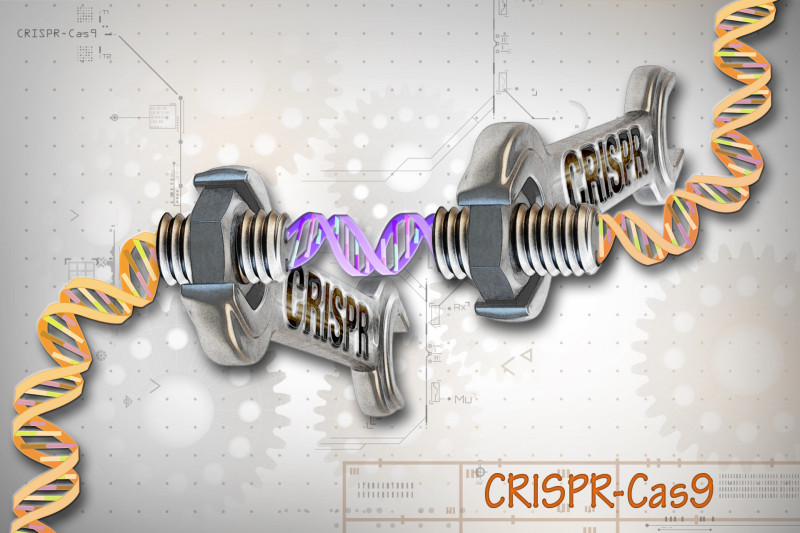This is not the case for Cas9, the enzyme that acts as a molecular scissors and makes the incision in the targeted area of the DNA. No matter which specific part of the DNA you send it to, you always use the same Cas9.
What gets Cas9 to the right place in the DNA is what's appropriately called guide RNA. A closely related molecule to DNA, RNA is important for a variety of processes related to translating the information of genes into actions in a cell. These simple RNA molecules are easy to make and deploy as guides. You can use a computer program like this one to customize RNA. Then you order it from one of a number of different a companies and insert it, along with Cas9, into a cell.
This also means it is easy to simultaneously hit multiple spots in the DNA -- you do that by adding more guide RNAs.
Guide RNAs work on the same principle that Watson and Crick, discoverers of the chemical structure of DNA, found in 1953 with the help of X-ray crystallographic photos from the work of Rosalind Franklin -- base pairing.
The Power of Base Pairing
Watson and Crick could not have figured out DNA structure without determining that its four nucleotide bases -- those famous As, Gs, Cs and Ts -- line up in the “stairs” of the spiral staircase that forms its shape. Watson and Crick found that A always pairs with T, and G always attaches to C.
This doesn’t only apply to DNA. RNA uses the same base-pairing principle, with one exception: It has a U instead of a T. So for RNA, A always pairs with U, and G with C.
The guide RNA gets Cas9 to the right place by relying on these pairing rules. Let’s say you want to target this sequence of DNA:
GGCCTT
You send an RNA with complementary base pairs that will bond with it:
CCGGAA
You then add this guide RNA to the Cas9 “scissors,” sending it to the exact spot you want to snip. This is all you have to do if you just want to disable a gene. To fix a gene, you usually need to add, along with Cas9 and the guide RNA, a copy of the “fixed DNA” that the cell can use as a template for repairing that gene.
A guide RNA has a few other requirements, but the key is to match it with the DNA.
The example above is a bit misleading, because If we were really to go after just six bases, we’d shred the DNA into hundreds of thousands of pieces. On average there are something like 700,000 bits of DNA with this exact sequence scattered across the human genome.
This is why scientists target much larger, and thus more specific DNA sequences, along the lines of 20 bases -- It is much easier to find stretches of bases this long that are unique.
So remember, the next time you read about CRISPR-Cas9, don't forget about that all-important guide RNA. That's the thing that gets the gene-editing tool to where it's going.
Dr. Barry Starr is a scientist in the Department of Genetics at Stanford University. He runs the Stanford at The Tech program and the Understanding Genetics website with The Tech Museum of Innovation in San Jose, California.
